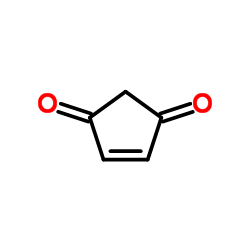Cavity ringdown spectrum of the T(1)(n,pi*) <-- S(0) transition of 4-cyclopentene-1,3-dione.
Mitchell G Springer, Nikolaus C Hlavacek, Sydney P Jagusch, Andrew R Johnson, Stephen Drucker
Index: J. Phys. Chem. A 113(47) , 13318-26, (2009)
Full Text: HTML
Abstract
The cavity ringdown absorption spectrum of 4-cyclopentene-1,3-dione was recorded near 487 nm in a room-temperature gas cell. The very weak band system (epsilon approximately 0.05 dm3 mol-1 cm-1) in this region is due to the T1(n,pi*) <-- S0 electronic transition. The origin-band maximum was observed at 20540.0 +/- 0.5 cm-1. We have assigned about 40 vibronically resolved bands in a region extending to +1100 cm-1 relative to the origin. Assignments were aided by quantum-chemical calculations of the T1 <-- S0 0-0 excitation energy as well as ground-state vibrational frequencies. From the CRD spectral assignments, we determined fundamental frequencies for several vibrational modes in the T1 excited state, including the lowest-energy ring-bending and -twisting modes, nu19' (b1) and nu14' (a2), respectively. Their fundamentals in the T1 state are 160.5 and 246 cm-1, compared to 99 and 239 cm-1, respectively, in the S0 ground state. The increases in these ring frequencies upon electronic excitation signify that the nominal n --> pi* chromophore is delocalized to include the conjugated ring atoms. The extent of this delocalization is different in the T1(n,pi*) vs S1(n,pi*) excited states. This conclusion is based on observed differences in T1 vs S1 ring fundamental frequencies.
Related Compounds
| Structure | Name/CAS No. | Molecular Formula | Articles |
|---|---|---|---|
 |
2-Cyclopentene-1,4-dione
CAS:930-60-9 |
C5H4O2 |
|
The cyclopentenone prostaglandin 15d-PGJ2 inhibits the NLRP1...
2015-03-15 [J. Immunol. 194(6) , 2776-85, (2015)] |
|
SAR and 3D-QSAR studies on thiadiazolidinone derivatives: ex...
2005-11-17 [J. Med. Chem. 48 , 7103-12, (2005)] |
|
Simple synthesis of 1,3-cyclopentanedione derived probes for...
2011-08-28 [Chem. Commun. (Camb.) 47(32) , 9203-5, (2011)] |
|
Antifungal acylcyclopentenediones from fruiting bodies of Hy...
2007-01-01 [J. Nat. Prod. 70(1) , 137-9, (2007)] |
|
Purification and characterization of two phospholipid exchan...
1979-08-25 [J. Biol. Chem. 254(16) , 7795-802, (1979)] |